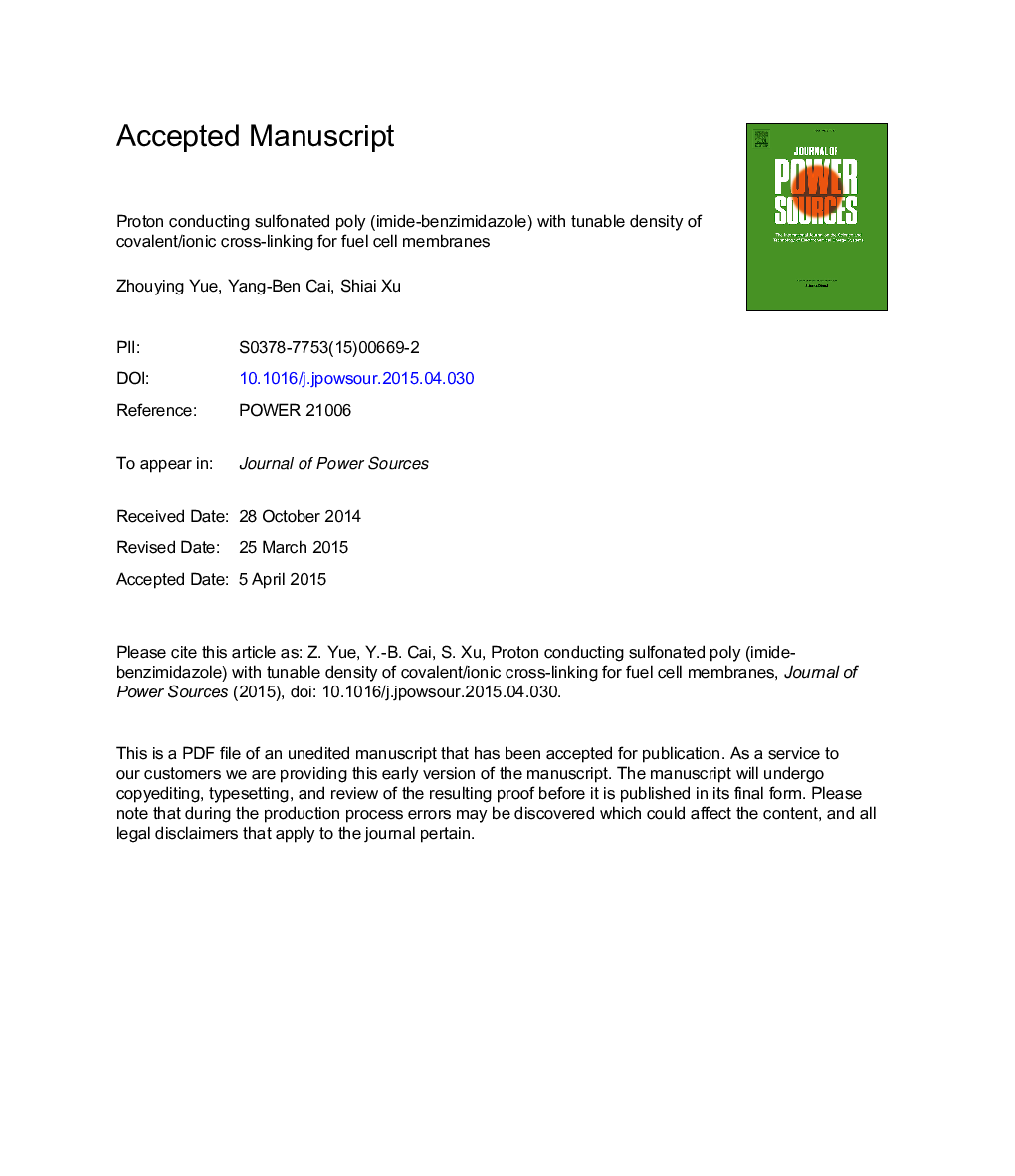| Article ID | Journal | Published Year | Pages | File Type |
|---|---|---|---|---|
| 7732167 | Journal of Power Sources | 2015 | 31 Pages |
Abstract
Ionic cross-linked sulfonated polyimides containing bis-benzimidazole rings have been prepared from 1,4,5,8-naphthalenetetracarboxylic dianhydride (NTDA), 6,6â²-bis[2-(4-aminophenyl)benzimidazole] (BAPBI) and 3,3â²-bis(4-sulfophenoxy)- benzidine (BSPOB). A new cross-linker, 4,4â²-bibromomethenyl diphenyl ether, is used to induce covalent cross-linking between halogen and imidazole groups in SPIBI chains via a facile thermally activated reaction. The resulted covalent and ionic cross-linked membranes show an improved resistance to hydrolytic attack in deionized water at 80 °C (more than two months) and free radical attack in Fenton's solution (more than 690 min) as compared to non-cross-linked SPIBIs (less than two days and 270 min, respectively). Cross-linking also results in a reduction in proton conductivity due to the blockage of a hydrophilic channel. However, all the prepared CBr-ySPIBI-x membranes show a proton conductivity higher than 10â2 S cmâ1 under hydrous condition. This could be attributed to the fact that more cross-linking sites are contained in each repeating unit, which ensures enough cross-linking degree at high sulfonation level. All these results suggest that CBr-ySPIBI-x membranes have a great potential for applications in the proton exchange membrane fuel cells.
Keywords
Related Topics
Physical Sciences and Engineering
Chemistry
Electrochemistry
Authors
Zhouying Yue, Yang-Ben Cai, Shiai Xu,
